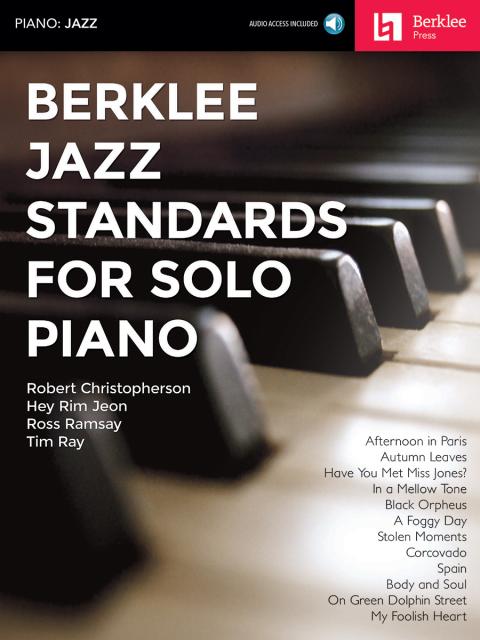The Woodshed: Arranging a Jazz Classic for Solo Piano
The following is excerpted from the book Berklee Jazz Standards for Solo Piano, published by Berklee Press.

Hey Rim Jeon ’01 is an assistant professor in the Piano Department and an active jazz artist nationally and internationally. She has released four albums as a leader. Visit jazzjeon.com.
“Autumn Leaves,” originally titled “Les Feuilles Mortes,” was written in 1945 by Hungarian-French composer Joseph Kosma with French lyrics by Jacques Prévert. English lyrics were coined two years later in 1947 by American song-writer Johnny Mercer. The song’s melody is perhaps one of the most recognizable within popular jazz repertoire, and has been recorded by countless jazz artists, including vocalists Nat King Cole, Frank Sinatra, and Sarah Vaughan, and pianists, Bill Evans, Keith Jarrett, and Monty Alexander. The song offers an excellent way for beginning players to become acquainted with jazz harmony, as the chord progression consists almost exclusively of II V I and II V sequences, which are typical in the jazz idiom.

Berklee Jazz Standards for Solo Piano, by Robert Christopherson, Hey Rim Jeon, Ross Ramsay, and Tim Ray. Copyright © 2017 Berklee College of Music. All rights reserved, used by permission. Distributed by Hal Leonard, item HL001604821, $19.99. Available for purchase at your local music retailer.
This arrangement of “Autumn Leaves” is in 4/4 time, in the key of G minor. It has an intro-AABC-outro song form, and is 64 bars in length. An unusual aspect of the arrangement is the classical introduction (measures 1–16), which is designed to surprise listeners upon first hearing. They will not be aware that the piece is “Autumn Leaves” until they recognize the well-known melody, which begins with the three-note pickup in the last measure before letter A. The use of a stylistically contrasting introduction reflects an original interpretation by Monty Alexander in his album Alexander the Great. The introduction is challenging because it’s essentially a two-part invention played with a straight-eighth-note feel that switches to swing when the main melody appears.
Once the melody is established at letter A, the AABC song form begins, each section being eight bars in length. In the first A section, the right hand plays the main melody with shell voicings providing rhythmic emphasis on the second half of the even-numbered bars. When the second A begins, the same rhythmic figures are used. However, to provide musical variation, the melody line is embellished with sequential approach notes from above, and three-note voicings are employed in the left hand. The dominant seventh chords in both A sections feature a tritone built from the 3rd and 7th scale degrees, and one tension. Note, in measures 18–19, the line cliché played in the left hand beneath the right-hand melody. (See example 1 below). The musical phrase connects the two A sections and quotes the melody used in measure 7, reflecting the contrapuntal approach taken in the introduction of the piece.
To support the ascending B section melody (measures 33–40), four-note voicings are introduced in the left hand, with dominant seventh chords featuring a tritone built from the 3rd and 7th scale degree, and two tensions. Both this section and the C section that follows (measures 33–40), make use of syncopated rhythms, that provide contrast to the rhythmic figures played in the A section.
Note in measures 37–39, the harmonized chromatic melody line, played with rhythmic anticipations. The chord voicings used are known as “So What” voicings. A “So What” voicing is a five-note chord structure consisting of three perfect fourth intervals followed by a major third. It is named after the voicings used by pianist Bill Evans in the song “So What” by Miles Davis from the album Kind of Blue. (See example 2.)
The arrangement finishes with an outro section, which is a return to the two-part invention heard in the introduction. As before, it is played in a straight-eighth feel. Rather than evoke surprise, this time the section is familiar to the listener and provides a balanced conclusion to the piece.
Example 1
In measure 18 an ascending line cliché sounds in the upper voice of the left hand. A melodic fragment quoted in bar 7 of the introduction is played in the right hand in bar 19.

Example 2
A series of three “So What” chord voicings begins on the “and” of beat four in bar 37. They move down chromatically with rhythmic anticipations.






